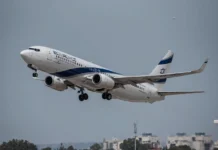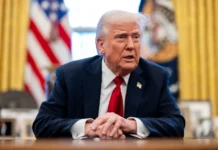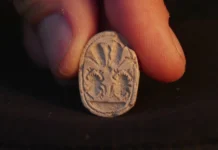In Washington, conventional wisdom has long held that Iran’s presence south of the U.S. border constitutes little more than an axis of annoyance. In this telling, Iran’s activities in Central and South America – from numerous commercial and trade deals with various nations to the establishment of cultural centers throughout the region – are disorganized, opportunistic, and ultimately of little consequence.
That narrative has proved remarkably persistent, and – in part as a result – Washington has historically paid scant attention to Iran’s presence in the hemisphere. But there is ample evidence to the contrary in the form of Iran’s strategic cooperation with the region’s anti-American regimes, and in well-documented instances of Iranian-sponsored subversion organized there and aimed at U.S. interests and allies. Now, with the Islamic Republic increasingly unfettered from sanctions as a result of last year’s nuclear deal with the West, there are unmistakable signs that it is widening its presence in the Americas in earnest.
TOUR DE FORCE
On August 21, Iranian Foreign Minister Javad Zarif kicked off a six-nation tour of Latin America. The trip, which entailed visits to Bolivia, Chile, Cuba, Ecuador, Nicaragua, and Venezuela, was intended as a very public affirmation of Iran’s enduring investment in the Western Hemisphere.
“There are many fields for economic cooperation between Iran and these six countries, but the capacities have yet to be fully utilized,” Iran’s deputy foreign minister, Majid Takht-Ravanchi, told state media ahead of the trip. Zarif’s visit, he said, was intended to correct this deficiency and elevate Iran’s economic cooperation with the region to “a whole new level.”
But Zarif’s choice of stopping points suggests that the trip is much more about geopolitics than it is about trade. With the notable exception of Chile, the nations that Iran’s foreign minister is courting are all in dire economic straits, struggling with high levels of inflation, rampant joblessness, and – in the case of Venezuela – a full-blown meltdown of the national economy. These countries thus hardly seem suited to be durable partners for Iran’s economy, which is itself struggling after years of multilateral sanctions.
Yet those same states are all members of the Bolivarian Alliance of the Americas (ALBA), the anti-U.S. regional bloc that was convened by the late Venezuelan strongman Hugo Chavez in the early 2000s. Iran has been an ALBA observer nation for years, and has actively aided the bloc’s radical anti-Western strategic agenda.
Indeed, Zarif’s Latin American junket even coincided with the official opening of a new ALBA regional defense school in Bolivia’s industrial capital of Santa Cruz. The academy, the Spanish-language television channel Telesur reported, is intended to be an “anti-imperialist” project designed to combat U.S. influence in the region. It comes complete with “courses on a wide range of subjects meant to counter the U.S. imperialist presence in the developing world, including the Theory of Imperialism, Geopolitics of Natural Resources and Bolivian Social Structures.”
It is also a distinctly Iranian venture. Iran is known to have provided at least some of the seed money for the school’s construction, and no less than then-Iranian Defense Minister Ahmad Vahidi presided over the school’s inauguration in May 2011 (causing a minor international incident in the process). Iran is now believed to be playing a role in training at the facility, suggesting the potential for collaboration between Iran and the region’s leftist radicals.
Iran’s already formidable presence in the region could expand from there. As the late Argentine prosecutor Alberto Nisman detailed in a May 2013 indictment, over the past three decades, Iran has successfully created a network of intelligence bases and covert centers in no fewer than eight Latin American countries: Brazil, Chile, Colombia, Guyana, Paraguay, Suriname, Trinidad and Tobago, and Uruguay. This infrastructure has enabled Iran to initiate or support at least three plots against the U.S. homeland over the past decade.
First, in 2007 a Guyanese national, Abdul Kadir, plotted to blow up fuel tanks underneath New York’s John F. Kennedy Airport. Had he succeeded, the attempt would have caused “extensive damage to the airport and to the New York economy, as well as the loss of numerous lives,” the FBI subsequently assessed.
Then, in October 2011, Iran’s Revolutionary Guard Corps attempted to assassinate Saudi Arabia’s ambassador to the United States at a restaurant in Washington DC. The IRGC had planned to use members of Mexico’s Los Zetas drug cartel to carry out the killing. In a press conference divulging details of the failed scheme, U.S. Attorney General Eric Holder noted that it was “directed and approved by elements of the Iranian government and, specifically, senior members of the Quds Force,” the IRGC’s elite paramilitary unit.
The same year, Venezuelan and Iranian diplomats planned to use Mexican hackers to penetrate U.S. defense, intelligence, and nuclear facilities and launch widespread cyber attacks throughout the United States. The effort was detailed in a December 2011 investigative documentary by the Spanish-language TV network Univision, which featured audio recordings of the plotters, including a high-ranking Iranian diplomat.
National security professionals are taking notice. In recent weeks, U.S. military officials have raised the alarm over what they view as the quickening pace of infiltration into Latin America by Middle Eastern extremists. At least some of these radicals are Iranian, or supported by the Islamic Republic. Indeed, recent weeks have yielded fresh reports of Iran’s recruitment and training of Peruvian militants, as well as a surge in arrests of suspected members of the Iranian-supported terror group Hezbollah in that country. In response to this and related developments, credible strategic assessments have concluded that “Iran’s involvement in Latin America is… increasing, and Hezbollah will likely be able to use these budding political and economic ties as cover for its operations.”
FRESH HORIZONS
To date, however, fears about Iran in the region have not been reflected in official U.S. policy. The Obama administration, long desirous of detente with Tehran, has consistently downplayed the extent of Iran’s presence and influence in the Americas. Over the past year, this state of affairs has only gotten worse; eager to expand and secure the benefits of the nuclear deal concluded between Iran and the P5+1 powers in 2015, the White House has consistently turned a blind eye to signs of Iranian rogue behavior abroad (including repeated ballistic missile tests and, most recently, the “high speed intercept” of a U.S. vessel by Iranian warships in the Persian Gulf). As such, there’s still precious little appetite in official Washington to acknowledge the full extent of Iran’s involvement in the Americas, let alone confront it.
That is a grave mistake. In the wake of last year’s nuclear deal, Iran’s strategy in Latin America is entering a new phase. And although Tehran has turned at least some of its recent attention to the region’s more significant economic players, such as Argentina, Brazil, and Mexico, Zarif’s latest visit sends an unmistakable signal that Iran is still seeking to shore up an anti-American axis in the United States’ geopolitical backyard. Washington would do well to take notice.


























